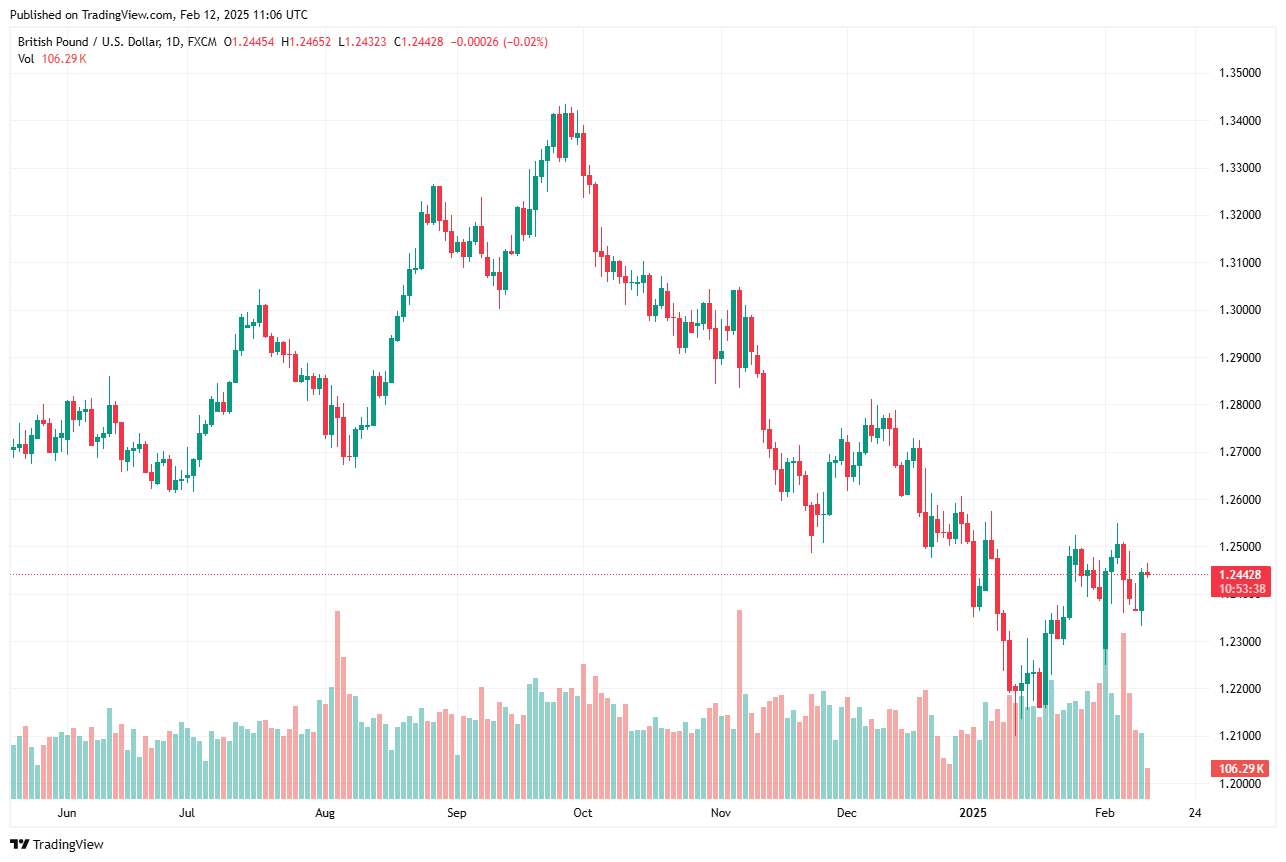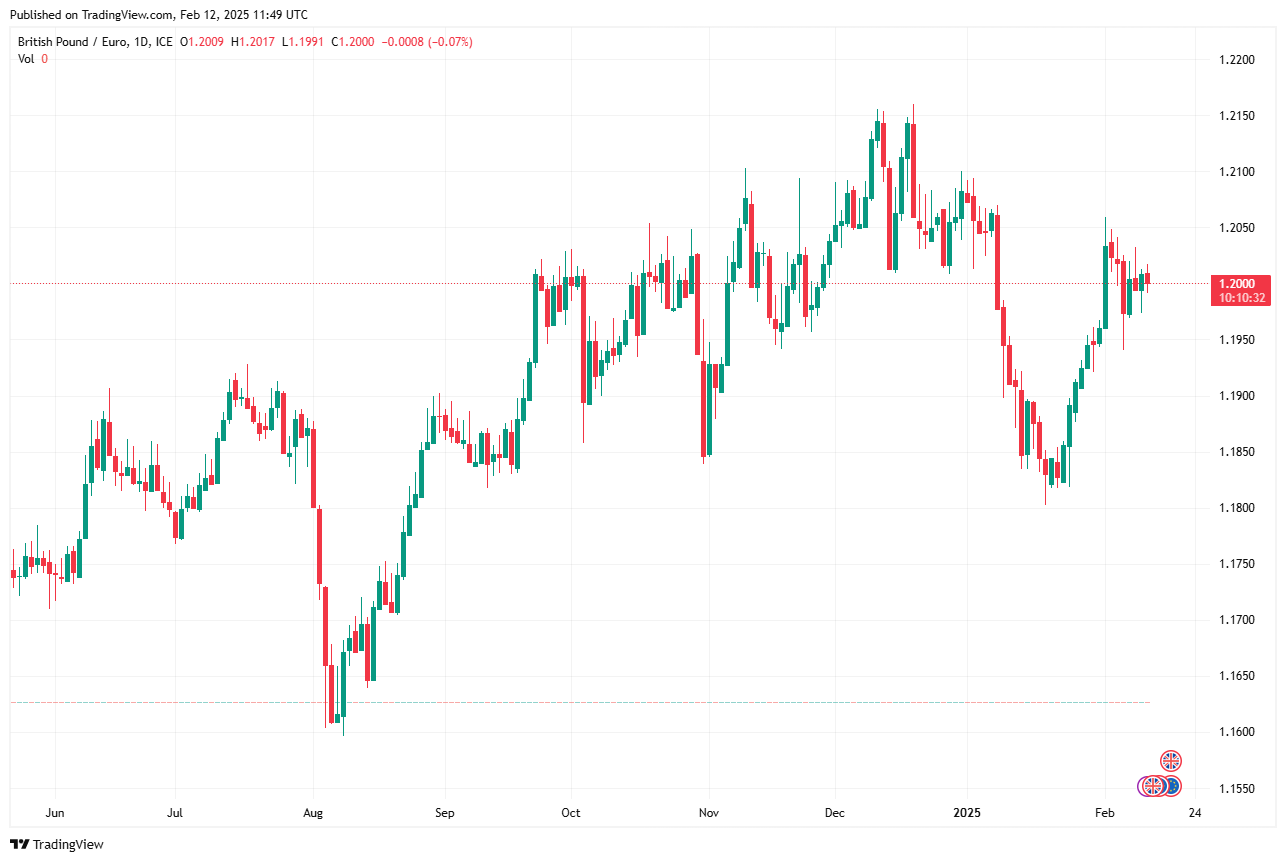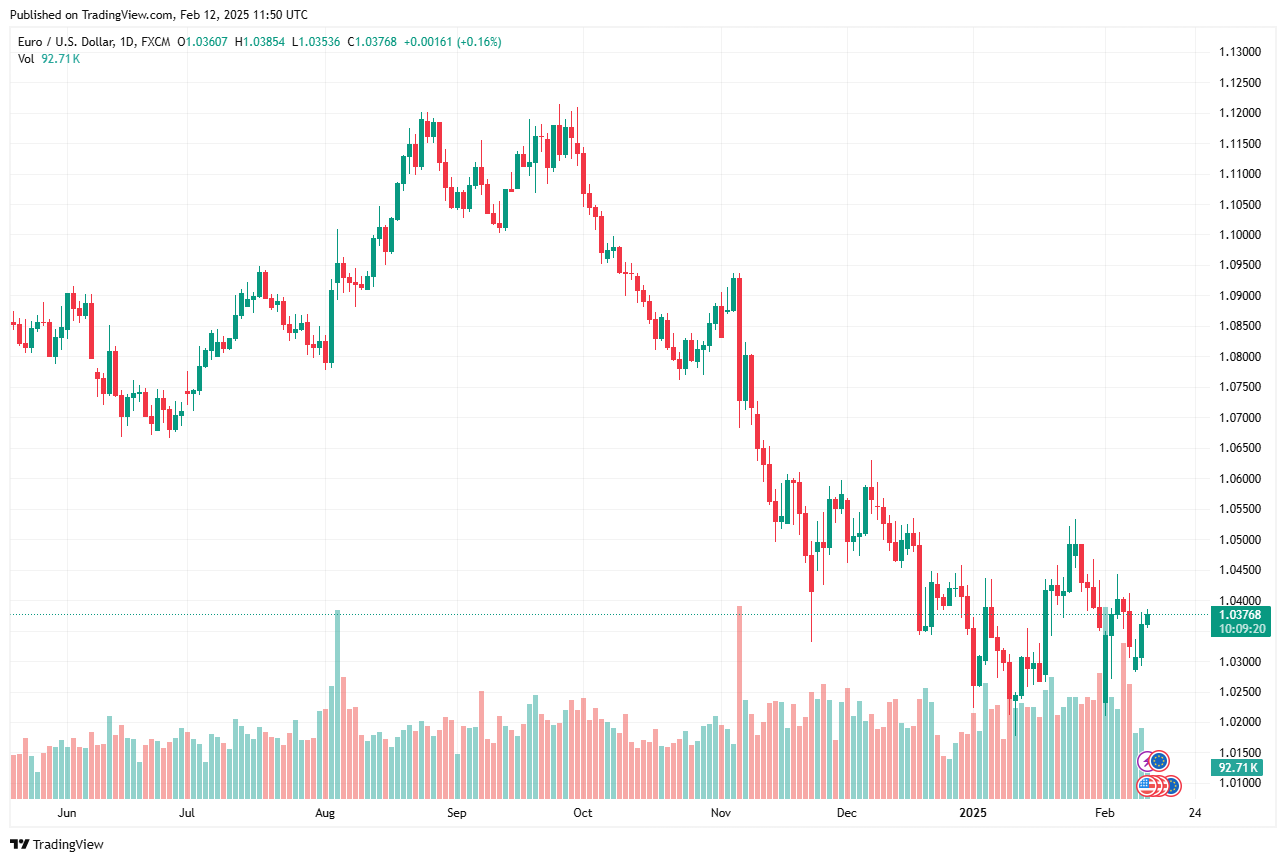- Monfor Dealing Team
- News
Mid-Week FX Outlook: GBP/USD Recovery, Trade Tensions Weigh on EUR
- Monfor Dealing Team
- News
GBP/USD

The GBP/USD pair managed to shake off its recent bearish momentum on Tuesday, snapping a three-day losing streak and regaining ground around the 1.2450 level. This recovery came as traders reassessed the US Dollar’s strength, leading to some renewed demand for the Pound. However, despite the rebound, GBP/USD remains constrained below the 50-day Exponential Moving Average (EMA), which hovers near the psychological 1.2500 threshold.
Market sentiment around the pair continues to be influenced by expectations regarding monetary policy from both the Bank of England (BoE) and the Federal Reserve. While the BoE remains cautious about its next steps, recent economic indicators suggest the UK economy may be slowing, which could weigh on Sterling. On the US side, the Dollar has been supported by resilient labour market data and persistent inflationary pressures, leading to speculation that the Federal Reserve may maintain higher interest rates for longer.
Looking ahead, GBP/USD traders will be closely monitoring upcoming macroeconomic data releases, including UK GDP figures and US inflation data. A weaker-than-expected UK GDP print could reinforce concerns about a potential recession, exerting downward pressure on the Pound. Conversely, any signs of cooling US inflation might weaken the Dollar, potentially allowing GBP/USD to push toward the 1.2500 resistance. Technical indicators suggest that while short-term bullish momentum has emerged, the pair needs a sustained break above 1.2500 to confirm a broader trend reversal. Until then, GBP/USD is likely to trade within its recent range, with key support around 1.2400 and further resistance near 1.2550.
GBP/EUR

At the time of writing, GBP/EUR was trading near €1.2009, largely unchanged from Wednesday’s opening levels. The Euro remained subdued on Tuesday amid escalating concerns over transatlantic trade tensions. The latest developments saw US President Donald Trump impose a 25% tariff on all steel and alluminum imports, a move that quickly drew condemnation from the European Union. European Commission President Ursula von der Leyen labelled the tariffs as ‘unjustified’ and vowed to introduce firm countermeasures.
This growing risk of a trade war between the US and the EU has rattled Euro investors, as prolonged tensions could weigh on Eurozone growth prospects. Additionally, the possibility of retaliatory tariffs has fuelled speculation that the European Central Bank (ECB) may be forced to consider further interest rate cuts in the coming months to support the region’s economy.
Meanwhile, the Pound saw limited movement on Tuesday as investors assessed comments from Bank of England Governor Andrew Bailey. While Bailey refrained from discussing monetary policy, his remarks on financial stability clashed with UK Chancellor Rachel Reeves’ pro-growth stance. This divergence in views could add uncertainty to the UK’s economic outlook.
With the second half of the week underway, the focus for GBP/EUR will shift to the UK’s latest GDP data. Analysts expect a 0.1% contraction in Q4 2024, following stagnation in Q3. If confirmed, this could amplify recession fears and weigh on the Pound. Additionally, the Euro’s inverse correlation with the US Dollar means strong US inflation data could weaken the Euro further if it drives demand for the ‘Greenback.’
EUR/USD

EUR/USD showed signs of strengthening as the Relative Strength Index (RSI) climbed to 60, indicating increased buying interest. The pair also closed three consecutive four-hour candles above the 200-period Simple Moving Average (SMA), reinforcing the bullish outlook.
Key resistance levels lie between 1.0390 and 1.0400, where the 100-period SMA aligns with the 50% Fibonacci retracement of the latest downtrend. If this zone is breached, the next upside targets are 1.0440 (61.8% Fibonacci retracement) and 1.0500-1.0510, where another key Fibonacci level aligns with a psychological round number.
On the downside, initial support is expected around 1.0290-1.0300, where the 23.6% Fibonacci retracement aligns with a round number level. Below this, 1.0250 and 1.0200 serve as additional static support zones. Traders will be watching upcoming US inflation figures, as stronger-than-expected data could boost the Dollar and pressure EUR/USD lower, while softer inflation could support further gains for the Euro.









